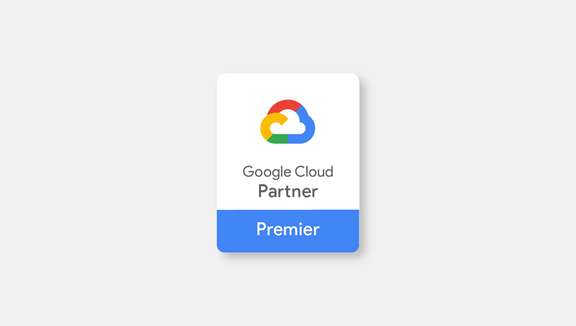Why should companies have sustainability at the core of their cloud strategy? Mo Joueid, Google Cloud Platform Practice Lead at Kin + Carta, shares some insights on this challenge and how we’re supporting ‘green’ modernization journeys.

Embracing cloud adoption in a sustainable way with Google Cloud
One of the many reasons I receive tremendous pleasure from working in the cloud industry, and with Google Cloud in particular, is the amount of opportunity the cloud provides to organizations building a sustainable and socially responsible framework, beginning with a remarkable baseline. As outlined in a recently published report by the IPCC, it is paramount, now more than ever, that organizations establish a renewed focus on sustainability, and adapt a value-driven approach when developing and implementing critical business strategies.
It’s about the journey — not the destination
Organizations should consider sustainability a journey as opposed to a destination or solution. In working with our clients, we look at this as a multi-layered approach with many facets:
- What is the opportunity for companies to become more sustainable, particularly in the areas of Information and Communication Technology (ICT) procurement and consumption?
- What effect will their decisions today have on their ability to optimize their businesses and achieve operational and sustainability excellence tomorrow?
By 2030, 21% of total electricity demand will come from ICT, and data centres alone will account for 3-8% of global electricity demand (up from 2% today). It is imperative that we address electricity consumption, carbon emissions and their impact on a sustainable future. Whilst data centre operators now strive to get their Power Usage Effectiveness (PUE) ratio down as close to 1.0 as possible, the average remains at 1.59 (down from 1.98 a decade ago).

There are measurable carbon efficiencies that arise from the following:
- Using cloud alternatives (as opposed to on-premise technology) or switching to a cloud provider like Google Cloud, which is carbon-neutral, has an average annual PUE of 1.0 and is well on its way to using carbon-free electricity in every region by 2030.
- The cloud uses much less energy than a typical data center: it can be twice as energy efficient and deliver seven times the computing power with the same amount of electrical power.
- The cloud uses renewable energy like wind in and solar power, which, as a result, diverts most waste from global data centers away from landfills.
It is paramount, now more than ever, that organizations establish a renewed focus on sustainability, and adapt a value-driven approach when developing and implementing critical business strategies.
Mo Joueid Google Cloud Platform Practice Lead, Kin + Carta
Google Cloud — a cloud made for sustainability
While we have several clients on Google Cloud and that are on the path to using Google Cloud to accelerate their sustainability goals, such as fleet optimization and real-time inventory, a large proportion are still embracing the notion of using technology in a sustainable way. This remains the biggest challenge for organizations today, and the growth of multi-cloud use exacerbates this.
By its very nature, Google Cloud is a cloud for sustainability. It implies that the technology operates sustainably, but we are also applying the technology optimally. However, the journey does not end with a migration to Google Cloud, and we often find ourselves working with clients that do the following:
- Have migrated to Google Cloud, but the infrastructure has not been designed or operating optimally, offsetting some of the sustainability benefits. Some of the net effects of this are latency and poor performance. What is often the answer? To throw more money and resources at the problem.
- Have an application deployed on Google Cloud but are using legacy behavior, technology or architectures, which negates some of the tenets of a cloud for sustainability. They also may have not chosen the correct migration strategy for that particular application, by ‘cloud partners’ who understand the infrastructure but not the fabric of applications. The industry-reported proportion of applications which have been rolled back from the cloud to on-premises remains staggeringly high and concerning.
- Are using cloud storage or data warehousing, but have non-existent or very loose governance around data controls. This causes an explosion in data stored, often unnecessarily and with duplication, and exacerbates the challenges for organizations to drive insights for operational efficiency and, ironically, sustainability. For example, only 6% of all data ever created is in use today, with the other 94% sitting in a vast cyber landfill and creating a massive carbon footprint (source: HP Enterprise).
A compound effect of the above is a cloud solution that is not optimal nor sustainable and becomes operationally challenging and costly. Then add the complications of running workloads across various cloud providers.
Sustainability — Kin + Carta best practices
At Kin + Carta, we have invested a significant amount of time in investigating these challenges. We have taken the Google Cloud Architecture Framework and Well-Architected Framework when working in multi-cloud to lay out responsible design disciplines, optimization considerations and tooling that allow us to monitor the carbon impact of every decision:

The above forms the basis of our Cloud Sustainability Shared Responsibility Model and Cloud Sustainability Cookbook. It’s based on best practices that we have broken down into the following themes:
- Infrastructure Modernization
- Application Modernization
- Data Modernization
Because we appreciate that sustainability is a journey, we work with our clients to routinely review their Google Cloud environment and multi-cloud environment when applicable, track measurable business outcomes, identify unique areas of optimization, drive growth, enable velocity and innovation and empower our clients to make the world work better for everyone.

Kin + Carta and Google Cloud
Learn more about our partnership with Google Cloud and how we've helped our clients utilize their platforms and technologies to deliver market leading products across industries.
Find out how